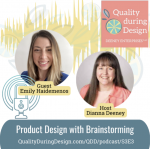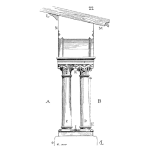
Crucial Conversations in Engineering, with Shere Tuckey (A Chat with Cross-Functional Experts)

Dianna Deeney interviews Shere Tuckey about Crucial Conversations® in an engineering environment: how to prepare for and have difficult conversations with peers, managers, and everyone else. Shere gave a conference presentation about Crucial Conversations® titled, “How to be Persuasive Rather than Abrasive.”
This interview is part of our series, “A Chat with Cross Functional Experts”. Our focus is speaking with people that are typically part of a cross-functional team for new product development. We discuss their viewpoints and perspectives regarding new products, the values they bring to new product development, and how they’re involved and work with product design engineering teammates.
About Shere
Shere is a Branch Chief in the Air Force Research Laboratory, Munitions Directorate, Eglin Air Force Base, Florida. She is responsible for advocating, planning, budgeting, organizing, and directing the execution of a high-priority technology development portfolio as well as direct supervision and management of all personnel within the branch. Over the last twenty-nine years, she has managed twelve different teams across many engineering disciplines from shock physics experimentation to weapon effects modeling and simulation.
Shere has taken a special interest in leadership, mentoring, and helping teams communicate effectively. After being asked to serve as the Dean of Leadership for her organization’s workforce development program, she became certified to teach the Crucial Conversations® course as a foundational element of leadership development.
She has taught five highly rated classes to high level managers, junior employees, and everyone in between. The positive feedback received from these classes and the course’s universal applicability, has motivated Shere to share this knowledge in as many forums as possible.
Shere and Dianna talk about:
- what makes a dialogue a Crucial Conversation®
- how she discovered the Crucial Conversation® framework
- why she trains others at her work in the Crucial Conversations® model and champions its use
Shere also shares stories of success.
Listen to take your communications skills to another level, at work and everywhere else.

 We’re in our 6th episode into our series about generating ideas with our team toward action. The first two episodes were all about idea generation. The 3rd through 5th episodes was about using Quality Tools to help us group, explore, prioritize, and decide on an idea.
We’re in our 6th episode into our series about generating ideas with our team toward action. The first two episodes were all about idea generation. The 3rd through 5th episodes was about using Quality Tools to help us group, explore, prioritize, and decide on an idea.





